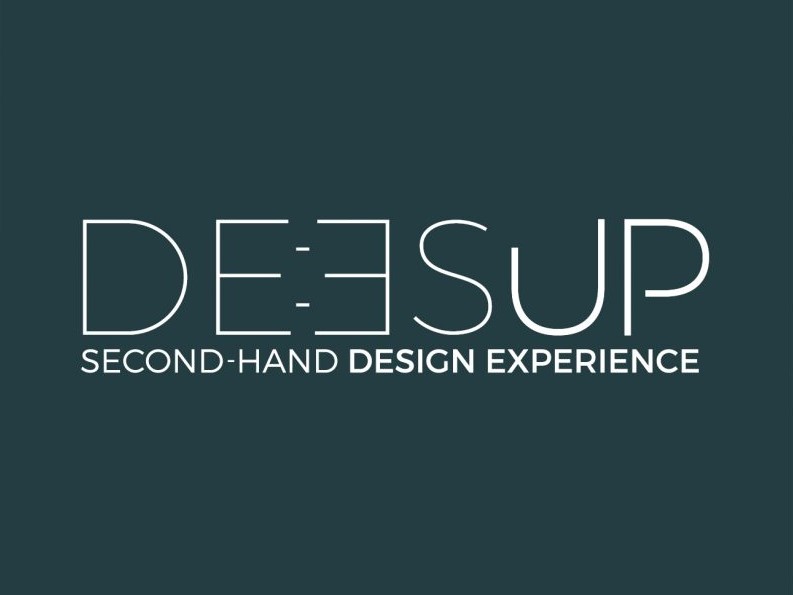
 Alberto Improda
Alberto Improda
Italian design: The Second Life of Design. The case of Deesup
- WTI Magazine #176 Jun 23, 2024
-

 Alberto Improda
Alberto Improda
Design, like all sectors of the Economy, is struggling with the challenges posed by the Sustainability Paradigm, attempting to reduce its impact on the Environment. The green transition of furniture products is of particular importance; suffice it to say that in Europe alone, about ten million tons of furniture and household items become waste every year.
Fashion, which is facing the same needs, has, among other things, set a trend that contaminates Tradition and Innovation: the rediscovery of Used Goods. Deesup is an Italian startup, founded by Valentina Cerolini and Daniele Ena, which promotes the development of the same philosophy in the field of Design.
The company calls itself "the marketplace dedicated to high-end used design, to sell and buy design icons from private sellers and exhibitions. We give timeless design icons a second life while contributing to sustainability."
Valentina Cerolini recounts the origin of the idea this way, "Deesup was born in 2017 from a personal need: after buying a house, we were faced with important designer furniture that, however, did not reflect our preferences. So we faced the problem of how to remove them, how to enhance them, how to sell them, who to give them to. At the same time, we wanted to furnish our house in a certain way, with a certain type of furniture, but we came across a very onerous and unaffordable market. This gave rise to the idea of creating a channel that was dedicated to enhancing the value of used furniture. We were the first in Italy. Then a phase of studying the market began: during the Salone del mobile we went around interviewing people who were attending the Salone and Fuorisalone, so that we could do a kind of profiling. Our sample had shown that our idea aroused curiosity and interest."
The Deesup brand stemmed from an ad hoc online contest, which saw the participation of numerous creatives and designers.
The company's promoters provided a set of guidelines and parameters, and then selected the winner based on the originality and curiosity that the chosen name could arouse.
Deesup is a combination of "design" and "up," meaning "to take design to the next level," which for us means a second life; the logo then is two opposing "E's," reminiscent of designer furniture.
The startup wants to be a tool that enables consumers to address at least a twofold order of problems.
On the one hand, Deesup makes the design market more accessible to a wide range of customers, operating a kind of democratization of furnishings that are often inaccessible for reasons of price and markup.
On the other hand, the company intends to offer the potential seller a secure channel to enhance the value of its products, with an end-to-end service ranging from the evaluation of the furniture to its promotion, from the physical pickup of the product after the sale to its delivery.
Deesup's initiative, then, pushes Design in the direction of Sustainability along three distinct sides.
That of the Environment, first of all, by reducing the impact on the ecosystem from the production of new furniture.
That of the Economy, moreover, by allowing consumers to value in monetary terms the products they already own.
That of the Social, finally, by also allowing less affluent people to surround themselves with beautiful and ingenious products.
The company's business has been expanding in concentric circles: initially, the impetus came exclusively from a small community of private sellers, and then it expanded more and more to the world of professional operators.
Deesup, in fact, has also been proving to be an effective tool for showrooms, for distributors, and for manufacturers themselves, who have samples, display products, flawed, end-of-series, mismatched products, returned from photo shoots.
Both manufacturers and retailers often find themselves with more or less large warehouses full of products, which fail to have a commercial outlet.
This has a cost from an economic point of view, in that you have capital invested and space occupied unnecessarily, as well as a harm from an environmental point of view, because goods are produced and then not used.
Says Valentina Cerolini, "We see ourselves as cash generators, in the sense that the private individual comes to us, sells a used piece and uses what he earns to maybe buy the chair from the new collection that came out recently. So it's really a circular economy: used becomes new and new becomes used. Like us, manufacturers are also espousing this cause, showing that the furniture sector has very high potential."
Certainly detaching oneself from a piece of furniture, which may have been part of one's home environment for lustrums, can be read as an operation of a certain cynicism.
But the same gesture can also be interpreted as an act of generosity and hope, with the hope of giving a cherished object a new future.
The owner of a vintage armchair, sold through Deesup, bid farewell to her with this message, "It is nice that this armchair can have a second life with someone because it belonged to my father's desk."